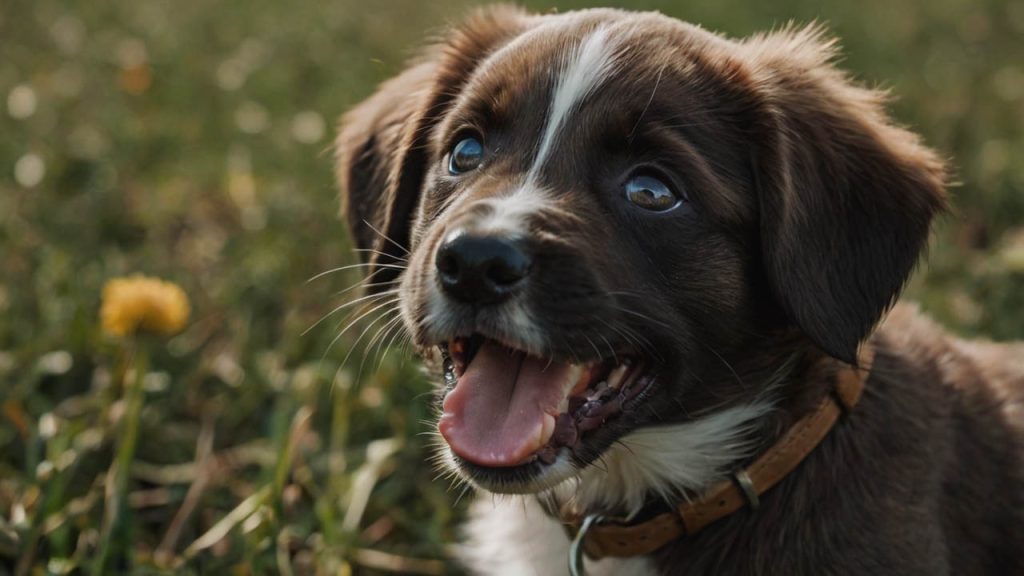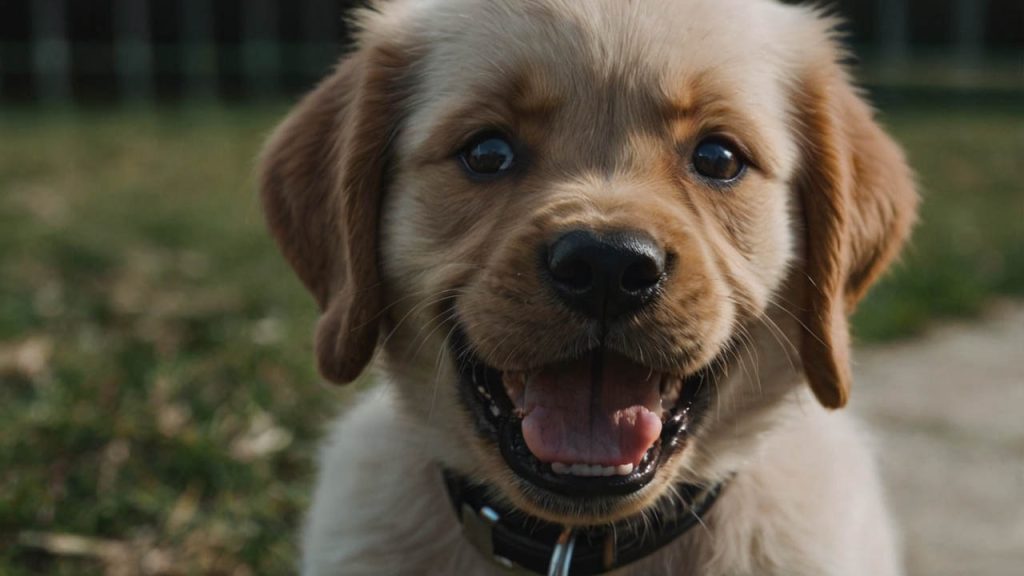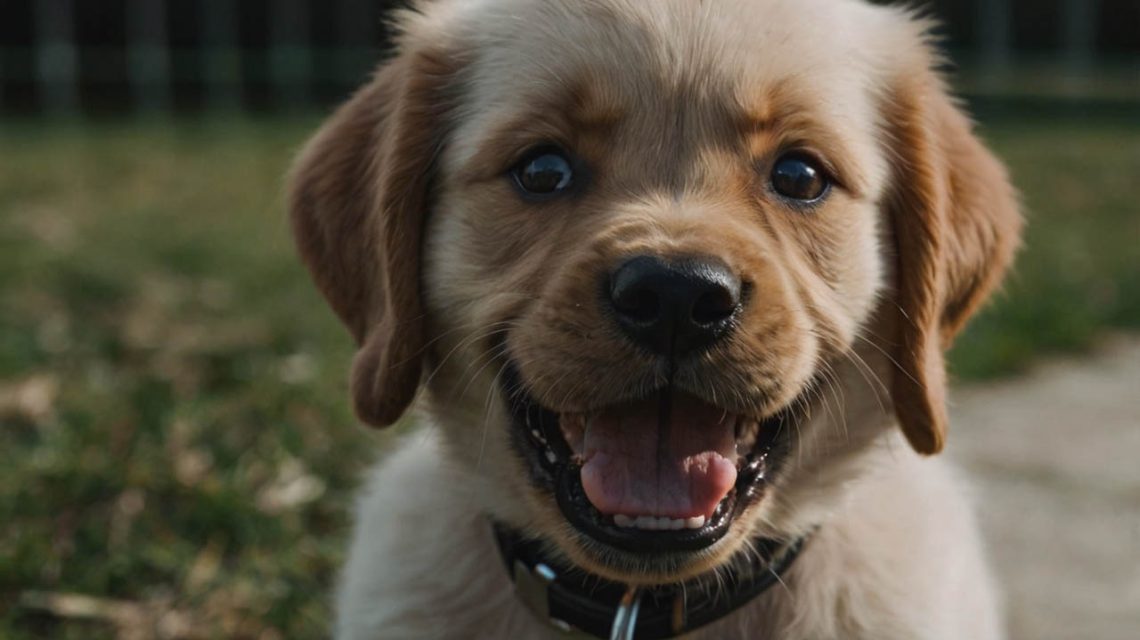Introduction: Teaching Your Puppy Proper Bite Inhibition
Learning how to teach a puppy not to bite ranks among the most crucial skills every new puppy owner must master during the critical early months of their pet’s development. According to the American Veterinary Society of Animal Behavior, puppies who receive proper bite inhibition training before 18 weeks of age are 85% less likely to develop aggressive biting behaviors as adults. Moreover, research from canine behavioral specialists demonstrates that consistent training during the socialization window (3-14 weeks) establishes lifelong patterns of gentle mouth behavior that protect both family members and strangers from potential injuries.
The importance of understanding how to teach a puppy not to bite extends beyond preventing painful nips and scratches to establishing fundamental communication and trust between puppies and their human families. Studies published in Applied Animal Behaviour Science reveal that puppies naturally use their mouths to explore the world, play with littermates, and communicate needs, making biting a normal developmental behavior that requires patient redirection rather than punishment. Furthermore, the methods used during this critical training period significantly impact the puppy’s future temperament, confidence, and ability to interact safely with children and other animals.
Successfully implementing techniques for bite prevention requires comprehensive understanding of puppy psychology, consistent application of positive training methods, and recognition that different puppies learn at varying rates based on breed, temperament, and early experiences. While the process demands patience and dedication, the investment in proper training yields a well-adjusted adult dog who understands appropriate boundaries and maintains gentle interactions throughout their life. Therefore, this detailed guide provides scientifically-backed strategies, troubleshooting solutions, and age-specific approaches to help you effectively teach your puppy not to bite.
Why Learning How to Teach a Puppy Not to Bite Matters
Understanding Puppy Development Stages
Before implementing how to teach a puppy not to bite strategies, recognizing developmental milestones helps set realistic expectations and choose appropriate techniques. Puppies begin learning bite inhibition from their mothers and littermates between 3-5 weeks of age through natural feedback during nursing and play. Subsequently, when puppies bite too hard during interaction, their siblings yelp and cease playing, teaching that gentle play continues while rough play ends social engagement.
The critical socialization period between 3-14 weeks represents the optimal window for bite inhibition training. During this phase, puppies’ brains are particularly receptive to learning social skills that become permanent behavioral patterns. Research indicates that puppies who miss this crucial training window require significantly more intensive intervention later and may never achieve the same level of bite inhibition as properly socialized puppies.
Teething intensifies biting behaviors between 3-6 months as puppies experience discomfort from emerging adult teeth. This natural process causes increased chewing and mouthing as puppies seek relief from sore gums. Understanding this temporary phase helps owners maintain patience while consistently reinforcing training principles without becoming frustrated by apparent regression.

Long-Term Benefits of Early Training
Mastering how to teach a puppy not to bite during early development prevents serious behavioral and legal issues in adulthood. Insurance industry data reveals that dog bite claims average 50,000−50,000−70,000, with many resulting in policy cancellation or refusal of coverage renewal. Furthermore, dogs with established bite histories face potential euthanasia depending on severity and local regulations, making early prevention literally life-saving.
Social opportunities expand significantly for dogs with excellent bite inhibition. These dogs can safely interact with children, elderly individuals, and other pets without constant supervision or muzzling requirements. Additionally, they’re welcome at dog parks, training classes, and social gatherings where poorly trained dogs might be excluded, enriching both the dog’s and owner’s social experiences.
The human-animal bond strengthens when biting concerns are eliminated early. Families can fully enjoy their puppy’s companionship without fear or frustration, leading to increased positive interactions and deeper emotional connections. Moreover, activities like grooming, veterinary examinations, and play become pleasant experiences rather than stressful battles.
How to Teach a Puppy Not to Bite: Foundation Techniques
The Bite Inhibition Method
The cornerstone of how to teach a puppy not to bite involves teaching controlled mouth pressure before eliminating mouthing entirely. This two-phase approach mirrors natural canine learning, first addressing bite force, then frequency. Initially, allow gentle mouthing while immediately responding to hard bites with clear communication that pressure crossed acceptable boundaries.
When your puppy bites too hard, emit a high-pitched “yelp” mimicking puppy distress sounds, then immediately withdraw attention for 10-20 seconds. This response replicates natural consequences puppies experience with littermates. Return to interaction only when the puppy calms, reinforcing that gentle play continues while hard biting ends fun activities. Research shows puppies typically moderate bite pressure within 5-7 days of consistent application.
Gradually increase sensitivity to pressure over several weeks. Once your puppy consistently delivers soft mouthing, begin responding to progressively gentler contact. This systematic approach teaches precise mouth control, ensuring your puppy understands exactly how much pressure is acceptable in various situations.
Redirection and Substitution
Effective implementation of how to teach a puppy not to bite requires providing appropriate outlets for natural mouthing instincts. Keep suitable chew toys immediately accessible throughout your home, instantly substituting them when puppies target hands, feet, or clothing. This redirection satisfies chewing needs while establishing clear boundaries about acceptable bite targets.
Toy selection significantly impacts redirection success. Puppies often prefer different textures during various teething stages—soft rubber for sore gums, rope toys for tugging urges, and hard nylon for intense chewing needs. Rotate toys every few days to maintain novelty and interest, preventing boredom that leads to inappropriate chewing targets.
Enthusiastically praise and reward toy engagement to strengthen positive associations. When puppies choose toys over human skin, provide treats, verbal praise, or brief play sessions as reinforcement. This positive feedback loop naturally increases appropriate chewing while decreasing human-directed biting without requiring punishment or confrontation.
How to Teach a Puppy Not to Bite During Play
Managing Excitement Levels
Controlling arousal during play sessions proves essential when implementing how to teach a puppy not to bite effectively. Monitor excitement indicators including dilated pupils, rapid panting, inability to respond to cues, and escalating roughness. Implement mandatory calm breaks every 2-3 minutes during play, preventing overstimulation that impairs impulse control and learning ability.
Structure play sessions with clear beginning and ending rituals. Use consistent cues like “play time” to start and “all done” to conclude, helping puppies understand activity boundaries. If teeth contact skin, immediately say “oops” and end play for 30 seconds, teaching that biting stops fun activities. Resume only after your puppy settles, reinforcing that calm behavior earns continued engagement.
Choose games that minimize biting opportunities while providing appropriate stimulation. Fetch, hide-and-seek with toys, and training games maintain distance between hands and teeth. Avoid wrestling, hand play, or games encouraging jumping and grabbing, as these blur boundaries about appropriate mouth use on humans.
Teaching Impulse Control
Building self-control forms a crucial component of how to teach a puppy not to bite training programs. Implement “wait” and “leave it” commands that transfer across multiple contexts including bite prevention. Start with treats in closed fists, opening only when puppies stop pawing or mouthing, teaching that patience and gentleness yield rewards.
Practice “gentle” or “easy” commands specifically for mouth control. Hold treats between fingers, releasing only when puppies take them without teeth contact. Gradually progress from hard treats to softer items, building reliable gentle-mouth behaviors. Most puppies master this skill within 2-3 weeks of daily five-minute sessions.
Incorporate impulse control into daily routines for consistent reinforcement. Require “wait” before meals, “gentle” for treat-taking, and “settle” before play sessions. This integration transforms necessary activities into training opportunities, accelerating learning through frequent practice without requiring dedicated training time.

Age-Specific Strategies: How to Teach a Puppy Not to Bite
8-10 Week Old Puppies
Very young puppies require modified approaches when learning how to teach a puppy not to bite due to their developmental immaturity. At this age, puppies just separated from littermates need gentle guidance rather than firm corrections. Focus on redirecting to appropriate toys and providing plenty of supervised socialization with other vaccinated, gentle dogs who model appropriate play.
Sleep management prevents overtired biting common in young puppies. Puppies this age require 18-20 hours of sleep daily, and exhaustion manifests as increased biting and inability to settle. Enforce regular nap schedules using crates or exercise pens, preventing the frantic biting that occurs when puppies become overstimulated and overtired.
Handling exercises build tolerance for human touch while teaching bite inhibition. Gently touch paws, ears, mouth, and tail while providing treats, creating positive associations with handling. If the puppy mouths during handling, freeze movement and wait for release before continuing, teaching that stillness and gentleness maintain pleasant interaction.
3-5 Month Old Puppies
Peak teething age requires specialized how to teach a puppy not to bite techniques addressing physical discomfort. Provide frozen washcloths, ice cubes in Kong toys, and frozen carrot sticks to numb sore gums naturally. Research indicates puppies with adequate teething relief exhibit 50% less inappropriate biting than those without proper outlets.
Consistency becomes paramount as puppies test boundaries during this developmental phase. All family members must enforce identical rules using the same commands and consequences. Mixed messages during this critical period can establish biting patterns that persist into adulthood, requiring professional intervention to resolve.
Training class enrollment during this period reinforces lessons through peer interaction. Puppy kindergarten provides controlled environments where puppies learn appropriate play from age-matched peers. Professional trainers can identify concerning patterns early, preventing escalation into problematic behaviors.
Advanced Techniques: How to Teach a Puppy Not to Bite
Positive Reinforcement Strategies
Modern understanding of how to teach a puppy not to bite emphasizes reward-based training producing faster, more reliable results than punishment methods. Capture and reward calm behavior around hands, increasing frequency of desired interactions. Click or mark the moment puppies interact without biting, followed immediately by high-value treats.
Differential reinforcement teaches puppies that different behaviors yield different outcomes. Biting results in immediate play cessation and attention withdrawal, while gentle interaction brings treats, praise, and continued engagement. This clear contrast helps puppies make independent choices favoring rewarded behaviors.
Shaping allows gradual progress toward ideal behavior. Initially reward any reduction in bite pressure, progressively requiring gentler contact for reinforcement. This incremental approach maintains motivation while building precise behavioral control. Most puppies achieve reliable gentle-mouth behaviors within 3-4 weeks using shaping techniques.
Environmental Management
Successful how to teach a puppy not to bite programs incorporate environmental modifications preventing rehearsal of unwanted behaviors. Use baby gates controlling access to prevent ankle-ambush opportunities. Tether puppies to stable furniture during supervision, preventing chase-and-bite games while maintaining interaction ability.
Strategic toy placement ensures alternatives remain constantly available. Position appropriate chew toys in every room, making redirection immediate and consistent. This environmental enrichment satisfies natural chewing instincts while protecting human skin and belongings from puppy teeth.
Clothing choices impact training success significantly. Avoid loose, flowing garments triggering prey drive and grabbing behaviors. Remove tempting accessories like dangling scarves or shoelaces during training phases. These temporary modifications reduce biting opportunities while skills develop.
Common Challenges When Teaching Puppies Not to Bite
Addressing Persistent Biting
Some puppies require modified how to teach a puppy not to bite approaches when standard techniques prove insufficient. Evaluate whether underlying issues contribute to excessive biting—hunger, exhaustion, overstimulation, or medical problems can intensify biting behaviors. Address root causes before expecting training success.
Time-out procedures provide consequences for persistent biters. Create a boring, safe space like a bathroom or exercise pen for 30-60 second isolation following biting. Deliver puppies calmly without talking or eye contact, preventing attention reinforcement. Consistent application typically reduces biting frequency within one week.
Professional consultation becomes necessary when biting escalates despite consistent training. Certified trainers assess individual puppies, identifying specific triggers and customizing intervention strategies. Early professional guidance prevents minor issues from developing into serious behavioral problems.
Family Consistency Issues
Maintaining uniformity across all family members challenges many households learning how to teach a puppy not to bite effectively. Children naturally play differently with puppies, often encouraging behaviors adults discourage. Supervise all child-puppy interactions, teaching both species appropriate behavior simultaneously.
Create written protocols ensuring everyone follows identical procedures. Post rules prominently listing responses to biting, acceptable games, and training commands. Regular family meetings discussing progress and challenges maintain consistency while addressing confusion.
Designate a primary trainer coordinating overall training efforts. This person ensures protocol consistency, monitors progress, and adjusts techniques based on results. However, all family members must participate in training for generalization across people.
Professional Training Support
When to Seek Expert Help
Recognizing when professional assistance enhances how to teach a puppy not to bite training ensures optimal outcomes. Any biting breaking skin warrants immediate consultation, indicating inappropriate bite inhibition requiring expert intervention. Additionally, biting accompanied by growling, stiffening, or resource guarding suggests developing aggression beyond normal puppy behavior.
Puppies over five months showing minimal improvement despite consistent training need professional assessment. By this age, bite inhibition should be well-established. Persistent hard biting may indicate underlying temperament issues requiring specialized approaches.
Multiple-dog households may benefit from professional guidance ensuring appropriate inter-dog play. Trainers assess whether resident dogs model appropriate behavior or inadvertently encourage rough play. They provide strategies managing multiple dogs with different training needs.
Maximizing Professional Training
Preparing for professional consultation optimizes how to teach a puppy not to bite training outcomes. Document biting incidents including triggers, frequency, intensity, and contexts. Video recordings help trainers assess behaviors they might not observe during consultations.
Choose certified, force-free trainers using evidence-based methods. Credentials like CCPDT or KPA-CTP indicate formal education and commitment to humane, effective techniques. Avoid trainers promoting dominance theory or punishment-based methods contradicting modern behavioral science.
Implement professional recommendations consistently between sessions. Practice assigned exercises daily, maintaining detailed progress logs. Regular communication about challenges ensures timely protocol adjustments maximizing success probability.
Maintaining Long-Term Success
Preventing Regression
Sustaining achievements from how to teach a puppy not to bite training requires ongoing reinforcement beyond initial success. Continue rewarding gentle behaviors even after biting ceases, maintaining learned patterns through variable reinforcement schedules. This approach prevents extinction of desired behaviors while maintaining reliability.
Adolescent regression between 6-18 months occurs normally as hormones fluctuate and dogs test boundaries. Calmly reinstate training protocols without frustration or punishment. Consistent handling typically resolves adolescent biting within days to weeks, preventing permanent behavioral problems.
Environmental changes may temporarily affect trained behaviors. Moving homes, schedule changes, or family additions can trigger stress-related regression. Temporarily increase structure and supervision during transitions, preventing establishment of unwanted patterns.
Building Lifelong Habits
Early success with how to teach a puppy not to bite creates foundations for appropriate adult dog behavior. Dogs with excellent puppy bite inhibition rarely develop biting problems later, validating early training investments. This prevention approach proves far more effective than attempting adult behavior modification.
Continued socialization throughout adolescence maintains and reinforces early training. Regular interaction with other dogs provides ongoing feedback about appropriate mouth use. Dog parks, daycare, or supervised playdates offer practice opportunities in varied contexts.
Monitor for warning signs throughout your dog’s life. Increasing mouthiness, reactivity, or guarding behaviors warrant immediate intervention. Early response to emerging issues prevents escalation into serious problems requiring extensive professional help.
Conclusion: Your Journey to a Gentle, Well-Trained Puppy
Mastering how to teach a puppy not to bite requires patience, consistency, and understanding of normal puppy development, but this investment yields a safe, trustworthy companion for life. Throughout this comprehensive guide, you’ve discovered the importance of early training, learned multiple teaching techniques, and understood how to troubleshoot common challenges. The key to success lies in starting early during the critical socialization period, maintaining consistency across all family members, and recognizing that bite inhibition is a learned skill requiring time and practice.
Remember that every puppy learns at their own pace, influenced by genetics, early experiences, and individual temperament. Some puppies grasp gentle mouth concepts within days, while others need weeks of patient guidance. Your commitment to positive, science-based training methods will ultimately determine your success in raising a dog with excellent bite inhibition.
Take action today by assessing your puppy’s current biting behaviors and age, then implement appropriate strategies from this guide. Start with the fundamental yelp-and-withdraw technique, ensure plenty of appropriate chew toys are available, and establish consistent household rules everyone will follow. Document your progress and adjust techniques based on your puppy’s responses. Most importantly, remain patient and persistent—your efforts in learning how to teach a puppy not to bite now will prevent serious problems later and ensure years of safe, enjoyable companionship with your well-trained dog.


